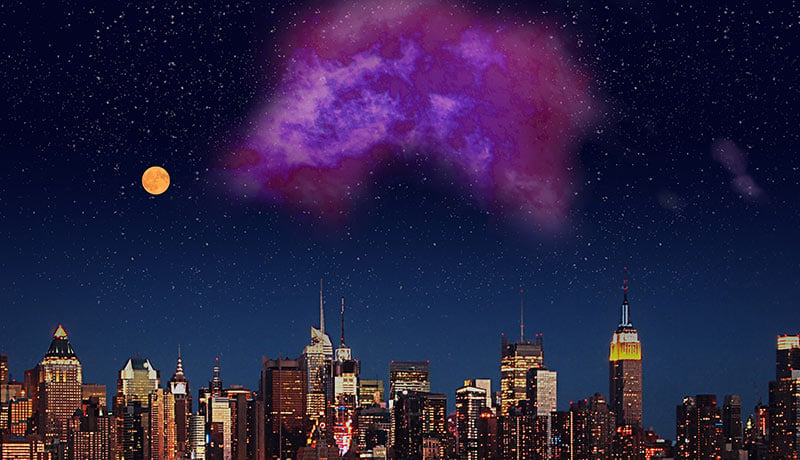Molecular clouds are composed mostly of molecular hydrogen and other molecules, along with cosmic dust. These dense clouds, often covering in the region of hundreds of light-years, are the birthplaces of stars and planetary systems. With temperatures typically between 10-50 Kelvin and densities ranging from hundreds to millions of molecules per cubic centimetre, molecular clouds are significantly denser than the surrounding interstellar medium. Gravity eventually causes denser regions within these clouds to collapse, forming protostars that will evolve into new stellar systems.
 The dark nebula LDN 1768 in front of background stars
The dark nebula LDN 1768 in front of background stars
Scientists led by Blakesley Burkhart from the Rutgers University have discovered "Eos," an enormous molecular hydrogen cloud that ranks among the largest and closest structures to our Solar System. This landmark discovery is notable for being the first molecular cloud detected using far-ultraviolet light emissions rather than traditional detection methods. Named after the Greek goddess of dawn, Eos represents a significant breakthrough in observation techniques and opens new avenues for studying molecular structures in space, as published in Nature Astronomy.
The team's new approach allowed them to detect the cloud's fluorescence, the result of glowing hydrogen molecules directly, rather than using traditional detection methods. Despite its proximity to our Solar System, Eos poses no threat to Earth and instead provides researchers with a valuable opportunity to study interstellar medium properties up close. This nearby gas cloud represents important raw material for future star formation and offers unique insights into these processes due to its accessibility for detailed observation.
Located about 300 light years away on the edge of the Local Bubble, the crescent-shaped Eos cloud spans approximately 40 moons across the sky with a mass 3,400 times that of our sun. Scientists predict it will evaporate in about 6 million years. The cloud was discovered using the FIMS-SPEAR far-ultraviolet spectrograph aboard the Korean STSAT-1 satellite, which detected its molecular hydrogen fluorescence.
 Illustration of the Korean STSAT-1 satellite.
Illustration of the Korean STSAT-1 satellite.
The discovery reveals the value of using new observational techniques, as this molecular hydrogen cloud remained hidden because it's mostly "CO-dark," lacking the chemical signatures detected by conventional methods. According to lead researcher Blakesley Burkhart, the hydrogen atoms in Eos have traveled for 13.6 billion years since the Big Bang before forming this nearby cloud.
Team member Thavisha Dharmawardena expressed surprise at directly observing molecular hydrogen, which was previously thought difficult to detect. Meanwhile, Burkhart's team has also, I should say potentially identified some of the most distant molecular hydrogen using the James Webb Space Telescope, effectively discovering both the closest and farthest hydrogen molecules from our Sun.
Source :A Vast Molecular Cloud, Long Invisible, Is Discovered Near Solar System
 Universe Today
Universe Today
